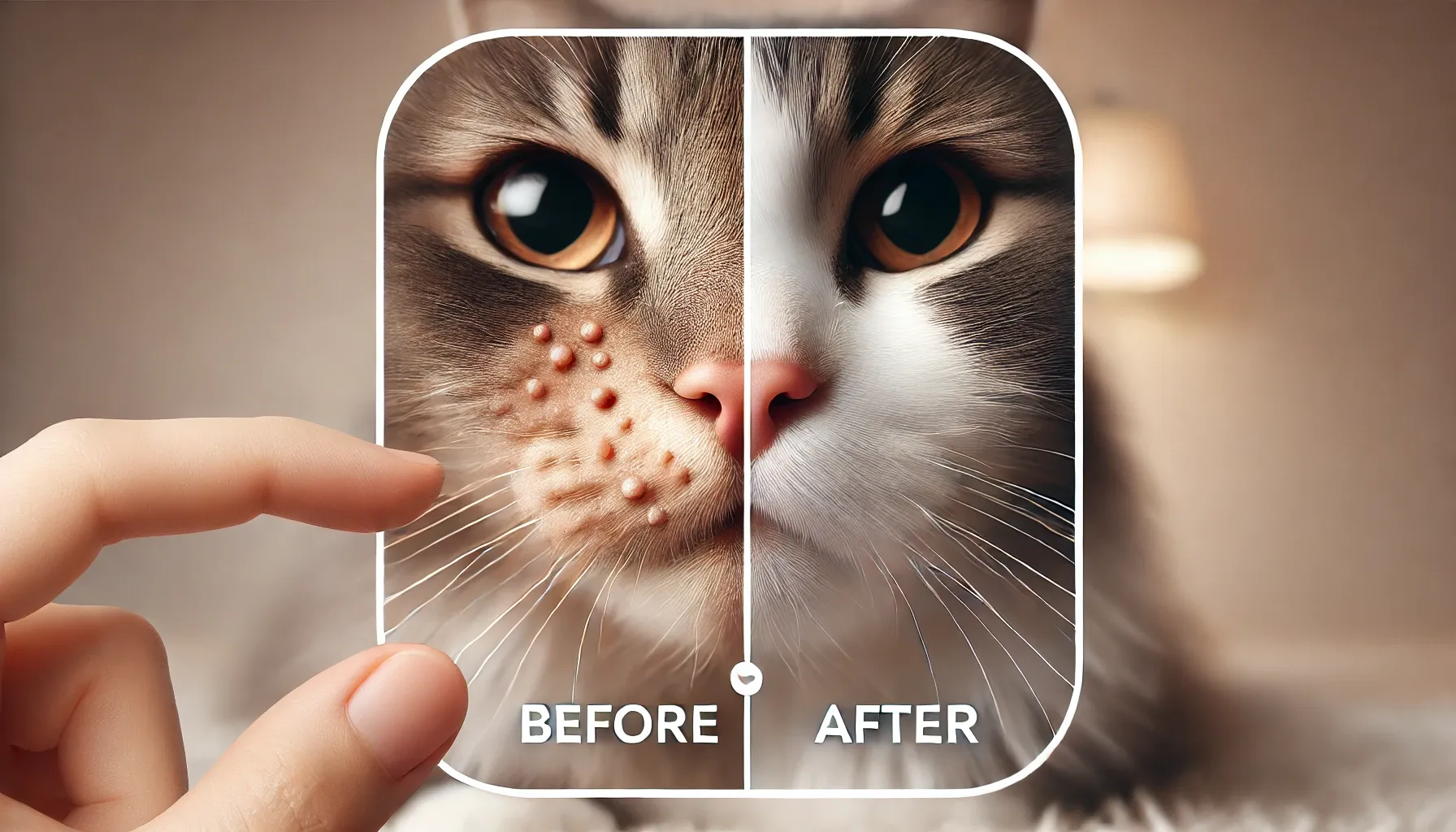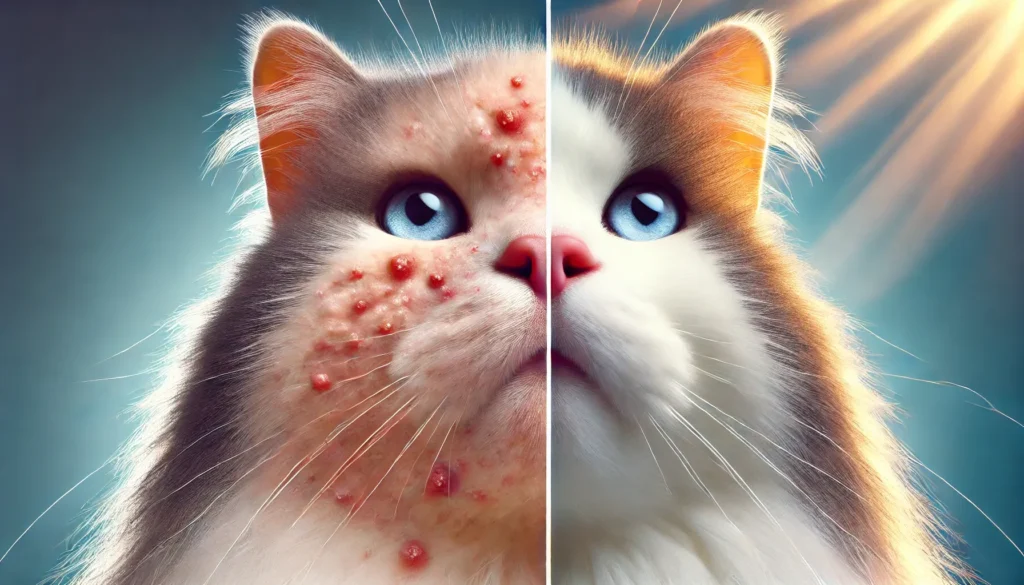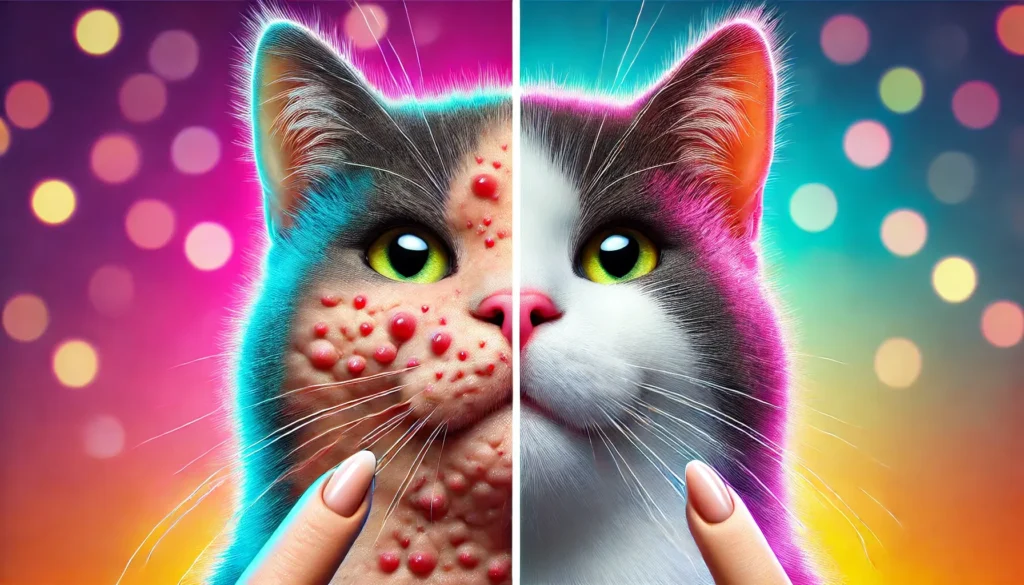Understanding and Managing Cat Acne: A Comprehensive Guide

Cat acne is a common and sometimes overlooked condition that affects many cats. Known formally as feline acne, this condition can cause considerable discomfort for affected pets and concern for their owners. This detailed article delves into the causes, symptoms, and various treatment options for cat chin acne, providing insights into how to manage this dermatological issue effectively.
What is Cat Acne?
cat chin acne, often noticed as blackheads or pimples on the chin and lip area of cats, is similar to acne in humans. These blemishes can range from mild, hardly noticeable comedones to severe, inflamed, and infected nodules or cysts. While it might seem minor, severe cases can lead to significant discomfort and even secondary infections.

Causes of Cat Acne
The exact cause of feline acne isn’t fully understood, but several contributing factors have been identified:
- Plastic Food Bowls: The use of plastic bowls can lead to the development of cat chin acne due to the material’s tendency to harbor bacteria and cause allergic reactions.
- Poor Grooming: Inadequate grooming can lead to oil and dirt buildup on the skin, clogging pores.
- Excessive Sebum Production: Overactive sebaceous glands can produce too much oil, leading to clogged pores.
- Stress and Hormonal Imbalances: Like in humans, stress and hormonal changes can exacerbate skin conditions in cats.
Symptoms of Cat Acne
Recognizing the signs of cat chin acne is crucial for timely and effective treatment. Symptoms include:
- Blackheads and Whiteheads: Small black or white spots on the chin, lips, or even around the eyelids.
- Redness and Swelling: Affected areas may become red and swollen if the condition progresses.
- Hair Loss: Severe acne can lead to hair loss around the affected area.
- Itchiness and Discomfort: Cats may scratch their chin more frequently, indicating itchiness or discomfort.
Diagnosing Cat Acne
Diagnosis typically involves a visual examination by a veterinarian. In some cases, skin scrapings, biopsies, or cultures may be necessary to rule out other conditions such as fungal infections, mites, or even allergies.
Treatment Options
Treating cat acne depends on the severity of the condition:
- Topical Treatments: Mild cases might be managed with topical therapies such as benzoyl peroxide gels, chlorhexidine, or medicated wipes designed to cleanse the area and reduce bacteria.
- Oral Medications: In more severe cases, veterinarians may prescribe antibiotics or anti-inflammatory drugs to combat infection and swelling.
- Proper Hygiene: Regularly cleaning the cat’s chin with a mild, non-irritating soap can help prevent future outbreaks.

Preventative Measures
Prevention is often more effective than treatment when it comes to cat acne. Consider these steps:
- Switch to Stainless Steel or Ceramic Bowls: These materials are less likely to harbor bacteria and are easier to keep clean.
- Regular Grooming: Brushing your cat regularly can help remove excess hair and skin oils, keeping the skin clean and less prone to acne.
- Diet and Supplements: Feeding a balanced diet and considering supplements like omega-3 fatty acids can improve skin health.
- Reduce Stress: Keeping your cat’s environment calm and enriching can minimize stress, reducing the risk of acne.
When to Consult a Veterinarian
It’s important to consult a veterinarian if:
- Acne Persists or Worsens: If treatments do not seem to clear the acne or if it worsens, professional intervention is necessary.
- Signs of Infection: Swelling, pus, severe redness, or pain are indicators of an infection that requires immediate veterinary care.
Long-term Management
Some cats may require ongoing management to keep acne at bay, including regular veterinary check-ups, continuous use of specialized grooming products, and possibly long-term dietary adjustments.
Did you know?
The German Shepherd, a breed renowned for its loyalty, intelligence, and versatility, is one of the most popular and recognizable dog breeds worldwide.
Conclusion
Understanding cat acne in all its facets—from causes and symptoms to treatment and prevention—empowers cat owners to take proactive steps in managing their pet’s health. Regular veterinary visits and attentive care at home are crucial in ensuring that cat acne does not adversely affect your cat’s well-being or quality of life. With the right approach, cat acne can typically be managed effectively, allowing your cat to remain happy, healthy, and comfortable.
How do you treat cat acne?
Cat acne treatment varies depending on severity. Mild cases might only require increased hygiene, including regular cleaning of the affected area with cat-friendly wipes or a mild antiseptic. More severe cases could require topical treatments like benzoyl peroxide or even oral antibiotics prescribed by a vet if there’s a significant infection.
Can I wash cat acne with water?
Yes, you can wash cat acne with water, but it’s better to use a gentle, cat-specific cleanser to avoid irritating the skin further. Ensure the water is lukewarm to make it comfortable for your cat.
Can I brush cat acne?
It’s not recommended to brush over areas affected by acne as this can irritate the skin further and potentially lead to infection. Instead, gently clean the area without scrubbing.
What happens if you leave cat acne untreated?
Untreated cat acne can lead to worsening of the symptoms, including potential infections and deeper skin issues like folliculitis. Severe cases can become painful and may significantly affect your cat’s quality of life.
Can cat acne be painful?
Yes, if the acne becomes severe or infected, it can be painful for your cat. They may show signs of discomfort such as avoiding touch, being irritable, or scratching the area.
Can humans catch cat acne?
No, cat acne is not contagious to humans. It is specific to feline skin and related to their unique skin structure and conditions.
Is it bad to scratch cat acne?
Yes, scratching can exacerbate the condition by introducing bacteria into the pores, which can lead to infection. It’s important to keep your cat from scratching the area; a vet might recommend a cone or other device to prevent this.
Is it safe to pop cat acne?
It is not safe to pop cat acne. Squeezing the pimples can push the infection deeper into the skin, making the condition worse. Always consult with a vet for proper treatment.
Can food cause feline acne?
Certain types of food bowls, particularly plastic ones, can exacerbate feline acne due to bacteria that build up on the surface. Also, some cats may have food allergies that can contribute to skin conditions, including acne.
How long does cat acne last?
The duration of cat acne can vary. With proper treatment, you might see improvement within a few weeks, but some cats may experience recurring episodes, especially if underlying factors such as stress or hygiene aren’t addressed.
What is the best dish for cat acne?
Stainless steel, glass, or ceramic dishes are best for cats with acne because they are non-porous and easier to keep clean, reducing the risk of bacteria build-up.
Can milk cause cat acne?
Milk by itself isn’t a known direct cause of cat acne, but dairy can lead to skin issues in some cats, especially if they have an intolerance or allergy to lactose.


